Space
Sign up for our newsletter
We summarize the week's scientific breakthroughs every Thursday.
-
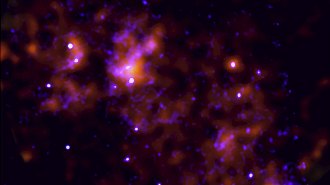 Astronomy
Astronomy200 years ago, the Milky Way’s central black hole briefly awoke
The black hole is thought to be mostly quiet and dim. Now, glowing cosmic clouds have revealed the behemoth’s last flare.
-
 Physics
PhysicsJulian Muñoz has a ‘ruler’ that could size up the early universe
The measurement tool could lay out a distance scale for cosmic dawn —and offer clues to the nature of dark matter.
-
 Astronomy
Astronomy50 years ago, a search for proof that the Maya tracked comets came up short
The mystery of whether the ancient civilization tracked comets endures, but recent evidence hints the Maya tracked related meteor showers.
-
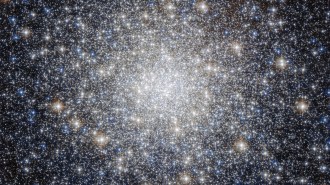 Astronomy
AstronomyA star cluster in the Milky Way appears to be as old as the universe
Globular cluster M92 is about 13.8 billion years old, a new calculation suggests. Getting the age right could help resolve a bigger cosmic conundrum.
-
 Astronomy
Astronomy‘Under Alien Skies’ imagines what the sky looks like on other planets
Astronomer Philip Plait’s new book takes readers on a thrilling ride to Mars, Pluto and even a black hole.
-
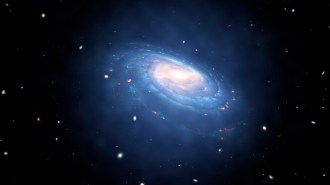 Astronomy
AstronomyAlien life may be possible even at the Milky Way’s edges
Phosphorus detected far from the Milky Way’s center seems to extend the zone where life could exist in the galaxy by thousands of light-years.
By Bas den Hond -
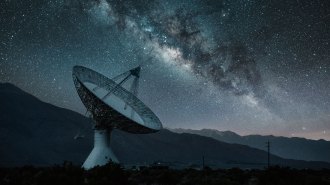 Math
MathHere’s how we could begin decoding an alien message using math
A new mathematical approach looks for order in strings of bits – without relying on human assumptions.
-
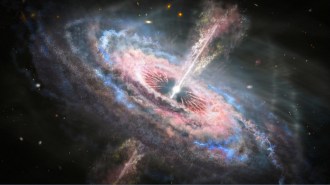 Astronomy
AstronomyIn a first, JWST detected starlight from distant galaxies with quasars
Until JWST’s sharp infrared eyes came along, it wasn’t possible to see the galaxies hosting extremely bright supermassive black holes called quasars.
-
 Astronomy
AstronomyA supermassive black hole orbiting a bigger one revealed itself with a flash
A supermassive black hole binary system has puzzled astronomers for decades. Now they’ve finally seen direct signals from the smaller of the two.
-
 Astronomy
AstronomyJupiter-sized planets are very rare around the least massive stars
A six-year search of 200 nearby low-mass red dwarf stars found no Jupiter-like planets, boosting the standard theory for how such planets form.
By Ken Croswell -
 Space
SpaceA cyclone has been spotted swirling over Uranus’ north pole for the first time
Voyager 2 hinted at a cyclone at Uranus’ south pole. Now Earth-based observations give the first direct evidence of a storm at the ice giant’s north pole.
-
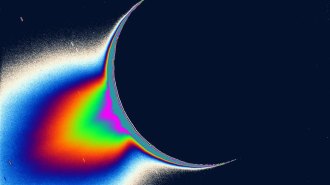 Planetary Science
Planetary ScienceJWST captured Enceladus’ plume spraying water nearly 10,000 kilometers into space
NASA’s James Webb Space Telescope reveals the rate at which Saturn’s moon Enceladus spews water and where that water ends up.